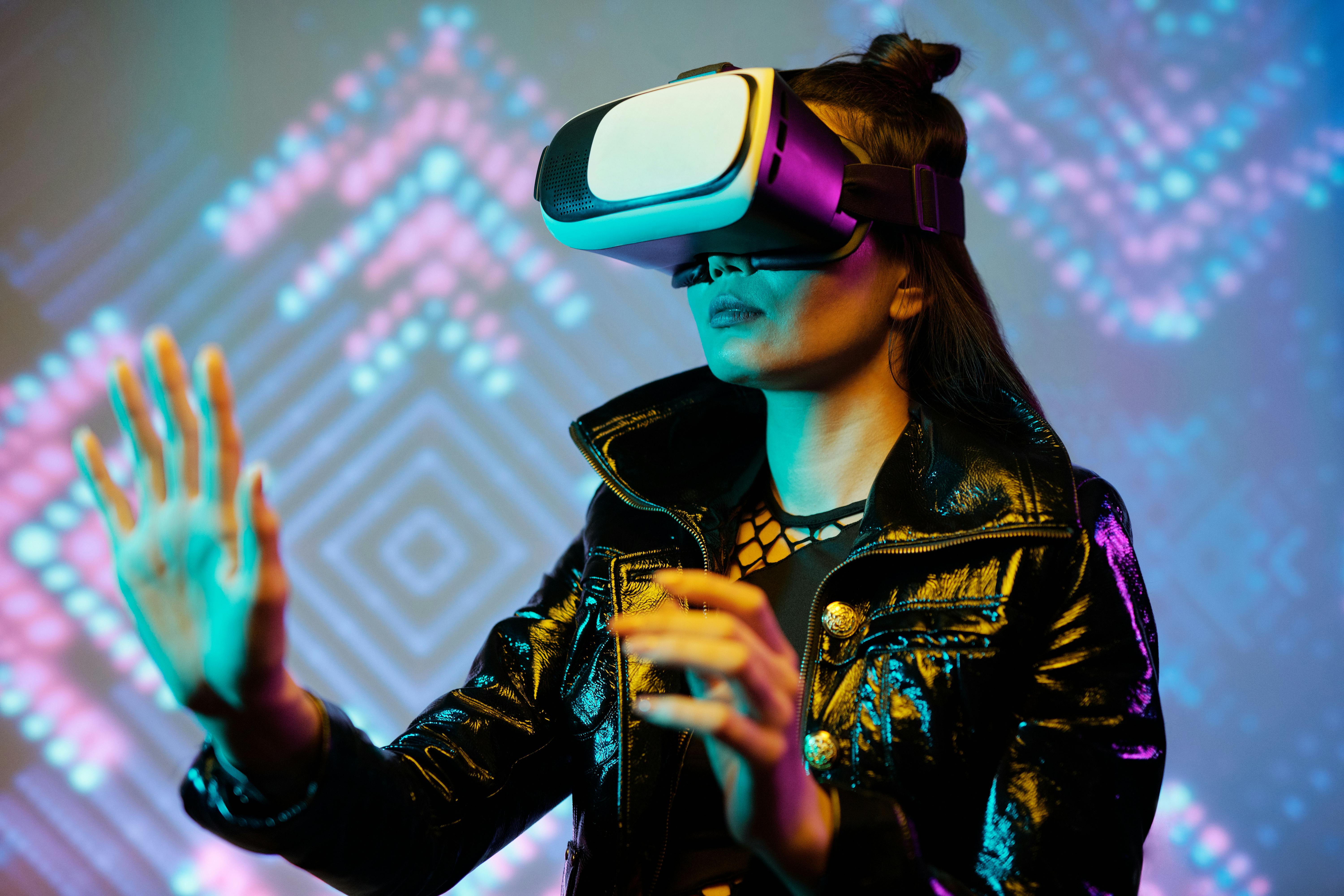Virtual Reality: Shaping the Future of Art and Entertainment
Introduction: As we delve into the digital age, a new technological wave is redefining the boundaries of art and entertainment. Virtual Reality (VR) is not only transforming how we consume content, but also reshaping the very essence of creative expression.

A Glimpse into the Past: The Origin of Virtual Reality
Virtual Reality, despite its futuristic allure, has a history that is deeply rooted in the 20th century. The concept of a simulated reality was first introduced in the 1930s with science fiction writers like Stanley G. Weinbaum exploring its potential. However, it was not until the 1960s that the first VR headset, known as “The Sword of Damocles,” was introduced by Ivan Sutherland and his student Bob Sproull. This device, although primitive compared to today’s standards, marked the birth of the modern virtual reality movement.
Virtual Reality Today: An Unprecedented Evolution
Fast forward to today, and Virtual Reality is experiencing a remarkable boom. Developments in technology and a growing interest in immersive experiences have propelled VR into the mainstream. The gaming industry has been at the forefront of this revolution, with major companies like Sony and Oculus launching their own VR gaming systems. But the applications of VR extend beyond gaming. It is being used in healthcare for therapies, in education for immersive learning, and, most notably, in the arts and entertainment industry.
The Impact of Virtual Reality on Art and Entertainment
The advent of Virtual Reality has revolutionized the world of arts and entertainment. Artists and creators are utilizing this technology to create immersive experiences that challenge traditional mediums. Virtual art galleries and exhibitions, such as those by Google’s Tilt Brush, are changing how we experience and engage with art. In the entertainment industry, VR is adding a new dimension to movies, concerts, and even theatre performances, transforming passive viewing into interactive experiences.
The Reception and Significance of Virtual Reality
The reception of Virtual Reality in the art and entertainment industry has been largely positive. Critics laud it for pushing the boundaries of artistic expression and offering novel experiences to audiences. However, it has also sparked discussions on the authenticity of digital art. Despite these debates, the significance of VR is unquestionable. As it continues to evolve, it is likely to redefine our understanding of art and entertainment.
Looking Ahead: The Future of Virtual Reality
Virtual Reality is still in its infancy, and its full potential is yet to be realized. As technology advances, we can expect VR to become more sophisticated, offering even more immersive experiences. It holds the potential to democratize art, making it more accessible to a global audience. The future of VR in the art and entertainment industry is undoubtedly exciting, holding promise for both creators and consumers.
Virtual Reality is more than just a technological marvel—it’s a creative tool, a new canvas for artists, and a gateway to experiences previously unimaginable. As we navigate through this digital age, it’s clear that Virtual Reality will continue to shape the future of art and entertainment, making it an exciting space to watch.






